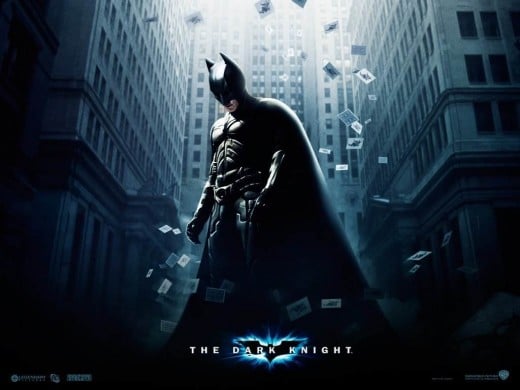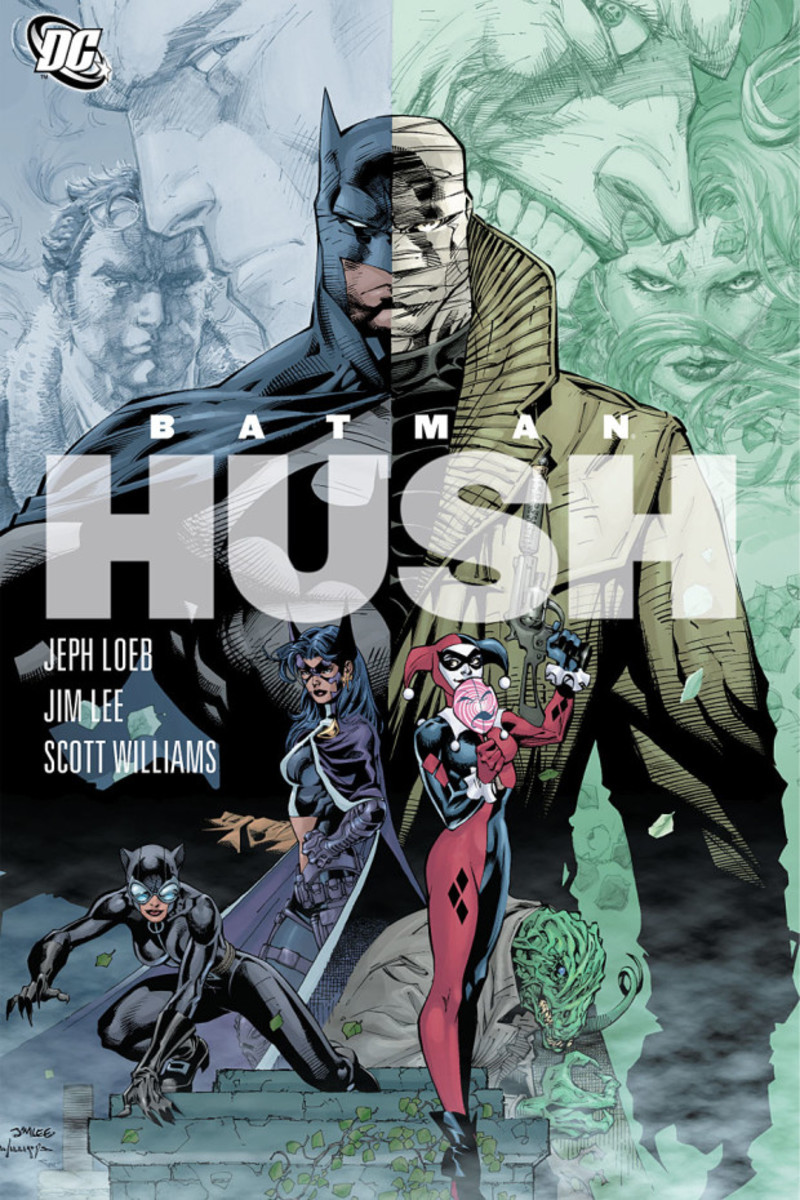Psychology and Batman
Gotham City and the Human Mind
Gotham City is a dark and frightening place. Psychopaths and maniacs roam the streets and it always seems to be nighttime. Batman is a hero that has given in to the darkness, using mystery and intimidation to frighten people into submission. This might almost work if his villains were not just as frightening.
Contrasted with Metropolis which is a bright and cheery place with an optimistic boy scout of a super hero who uses friendly courtesy to comfort the people that they are well-protected.
However Superman and his Metropolis, though iconic, are far less compelling than Batman and his Gotham. Even those not familiar with comics can name several of Batman's villains, while very few could name more than one of Superman's.
This is because Batman's villains each represent a troubling aspect of human nature, and one of the psychoses to which humans are often prey.
Shedding the light of psychology on the Dark Knight
When Batman came on the scene in 1939, he was just another in a large body of pulp heroes that dressed up in masks and fought crime. Characters like the Green Hornet (1936), The Shadow (1930), Angel (1939), The Spider (1933), The Spirit (1940),and The Phantom (1936) crowded the scene. Most of these had no powers, like Batman, a few gimmicky gadgets, like Batman, and fought bizarre criminal elements, like Batman. Several of them were millionaire playboys like Batman.
However, 70 years later, after most of these have been marginalized or forgotten, Batman remains arguably the most famous and popular superhero of all time.
Answering why this may be would take some serious sociological studies, but one thing that makes Batman such a compelling character is the world in which he lives.
Unlike most superheroes, Batman doesn’t have powers and neither do most of his enemies. Instead, Batman’s battles are far more psychological than they are physical. Gotham city is like the diseased mind of a psychotic person teaming with neuroses represented by Batman and his villains, and each of these speaks to a much deeper psychological theme. These themes will be explored within this hub.
The Dark Knight

The Batman/Joker Dynamic and Frued
On the face of it, the Joker and Batman have very little in common. One dresses like a bat, the other like a clown. Batman’s motivating force is the death of his parents; the Joker’s is chemical insanity. Clowns and bats are not exactly related to one another and yet the Joker/Batman dynamic is so epic and iconic that the comics and movies that feature these two in opposition are among the most popular of all time.
Of course, it is not who they are, but rather what they represent that make Batman and Joker such compelling enemies. Batman and Joker are both victims of seemingly random violence. Batman’s response to this is to take the law into his own hands, his logic being that reliance on the state is flawed at best and that the individual and not the state are responsible to uphold justice. This is why, despite being a renowned loner, Batman is always willing to take on apprentices and train and equip individuals willing to fight for justice.
However unlike Batman, whose woes are the result of crime and human evil, Joker’s misfortune came at the hands of a random accident from a man who was trying to uphold justice. It could be argued that Joker’s unhappy accident was his own fault. If he wasn’t out committing crime, he would never have taken a spill into that chemical vat (although in recent years a more extensive backstory detailed that Joker in his pre-joker days was being blackmailed into committing crime).
Wherever one might place the blame for Joker’s origin, his response to his disfigurement is quite the opposite of Batman’s. Rather than taking responsibility to enforce order on a random universe, Joker has gleefully given in to the chaos and become an agent of anarchy.
Order versus chaos is possibly the oldest theme in the book, harkening back to creation myths of ancient civilizations who spoke of god or gods bringing order to a chaotic void. However, the father of psychology, Sigmund Freud, gave a much more psychological explanation for why this theme speaks to human experience.
Freud credits two forces in human nature that are in constant war against one another: the id and the superego.
The id, Freud explains, is the most fundamental impulse of the human mind: desire. The id is a seething holocaust of lust, wanting immediate fulfillment and never satisfied. Id is hunger, id is envy and greed and gluttony.
The superego is the polar opposite of the id. Superego is absolute self-denial. It is the drive to be perfect and is responsible for constant, crushing guilt. Superego meets out heavy self-punishment for giving in to the desires of the id.
Interestingly, Freud saw neither id nor superego as “good” forces. Rather, Freud encourages all people to seek a comfortable balance between the two: selfishness and self-denial in moderation never giving in to one more than the other. This balance, Freud called the “ego.”
It is easy to see how Joker has given himself over entirely to the id. He giddily follows any impulse that he feels with no remorse whatever for the rampant destruction he leaves in his wake. Batman, on the other hand, is never satisfied that he has done enough, and feels the guilt for the Joker, taking on himself the heavy responsibility for every life Joker destroys and driving himself all-the-more to be better at stopping all forms of evil.
Of course Batman and the Joker are incapable of destroying one another. The id and the superego must remain in eternal battle with one another. To give in to either entirely is to cease to exist. Chaos needs order to act upon just as much as order needs chaos.
For this reason, the Batman/Joker dynamic is eternal.
Harvey Dent in "The Dark Knight"
Harvey Dent and the Two Faces of Justice
The story of Harvey Dent is a tragic one. One of Batman’s few villains who is also a close friend of Bruce Wayne, Dent was once a District Attorney until an attempt on his life left one side of his head horribly scarred; coincidentally cutting right down the middle of his face. This disfiguring attack came as a direct result of his work as an attorney - one of the people he prosecuted was trying to get revenge.
Their attempt at revenge was at least partially successful. Dent’s career and love-life were ruined, and his psyche was shattered as he looked at his once-handsome face, now divided in half as if he were two separate people.
Depending on the comic/cartoon/movie, the resulting insanity was either a split personality or a dualistic philosophy. Either way, Dent now sees all his actions in terms of black and white – harsh and unforgiving or kind and merciful – base on the flip of a coin.
One might be tempted to believe that this new outlook on life and the actions it invokes represent a radical change in thinking for Dent, but in fact they are merely an amplification of a belief system he already held.
You see, Dent was a lawyer. Lawyers are mercenary debaters. They are paid either to prosecute or defend a person. Just like Two-Face, money determines the stance a lawyer takes.
No doubt many people who enter the profession of law do so for pure and altruistic reasons, however it would be naïve for an aspiring lawyer to assume that every person, company, or interest that they represent is going to be pure.
It is tempting, then, to believe that the two faces of Dent represent good and evil, guilt or innocence; but this is not necessarily the case.
This writer was once elected to sit on the jury at a murder trial. The murder was the end result of an elaborate conspiracy on the part of the victim’s wife who entered into collusion with several of her relatives, most notably her slick and manipulative nephew, to murder her husband. The triggerman was a friend of the nephew who had been pressured into doing the actual killing so that the wife and her co-conspirators could deny involvement when he got caught.
The prosecution, representing the state, was seeking the death penalty in this instance since the murder was part of a conspiracy.
The prosecution had a fairly easy task ahead of them. They needed only to present the overwhelming evidence connecting the suspect to the murder, then show the lives that had been impacted by the loss of life. These people deserved justice!
At no point did the defense attempt to deny the murder. Rather, their case was constructed on the premise that the killer was the innocent victim of manipulation, extortion, blackmail, and threats – that the true villains were the wife and her co-conspirators. In other words, their plea was that the jury show mercy on this man.
The law, it is said, is blind. It does not take into account circumstance, psychology, or motivation; rather it renders a verdict based purely on the actions and their results.
However, this is seldom the case. Millions of people attend traffic court each year not to deny their violation, but to plead with the judge to reduce their fine and the points on their license. Similarly, the penalty that a guilty person receives is often greatly reduced through the efforts of their attorney. The young man in the murder trial, for instance, did not receive the death penalty from the jury who was swayed by the defense’s plea for mercy.
This is the true face of the ideal legal system: justice and mercy meted out in equal parts. Justice is, indeed, blind – meeting out absolute penalty with no regard for the person it is penalizing. Mercy, on the other hand is soft and kind, attempting to better the person it defends not through punishment but through example: just as you were forgiven, you must be forgiving.
Neither law nor mercy is “bad,” they both represent a necessary aspect of the justice system.
There can be no doubt that the “law” and “mercy” that Two-Face represents are twisted perversions of what the justice system was intended to do; but this in itself may be an all-too-accurate representation of the true justice system.
Most of the crime that Two-Face now commits is related to good old-fashion racketeering. Like so many of Batman’s enemies, Two-Face is, at heart, just another crime boss vying for a piece of the Gotham City pie.
Similarly, the actual justice system is all-too-often a purely financial institute. If a person has the funds, they can get away with murder. Bribery and extortion, especially at the police level, is far too common.
Harvey Dent used to be an idealist. He believed that he could truly represent pure justice, and in so-doing, he could reform a corrupt Gotham City. In his disfiguring attack, Dent was brought to the harsh reality that the evil of human nature succeeds at all levels, and that pure justice does not exist. Dent became the true face of the justice system, gave in to the very corruption that was Gotham City, and becoming yet another petty racketeer.
Happiness or Fulfillment
Would you rather have the unconditional happiness of the Joker or the hard-won fulfillment of Batman?
The Joy of the Joker: Is Happiness always Desirable?
The Joker is a happy person. In fact, the Joker is perpetually happy, regardless of pain, defeat, or incarceration, nothing ever seems to get him down. The Joker has no true friends, is hideously disfigured, spends most of his time locked away under the microscope of psychologists and clinicians, and no matter what scheme he concocts, he is always ultimately caught and re-incarcerated, yet he always has a smile on his face.
Batman, on the other hand, is a very grim person. He is fabulously wealthy, handsome, healthy, athletic, famous, a certified genius, is surrounded by friends who love and care for him, and ultimately, he is always victorious against his various opponents; yet he is constantly driven, restless, and discontent.
Few people have not pondered what they might do if they had Aladdin’s mythic lamp. Would they wish for wealth, fame, power, looks or love? These, of course, are all means to an end. Bruce Wayne could be said to have all of these things, and yet the Joker, who has none of them, seems to be the happier man.
Ask most children and they will gladly tell you that they would love to grow up to be Batman. In fact, there are a sizable group of adults who would also trade places with Batman. Most of them have probably not considered the cost associated with the life Batman leads, however one would have a difficult time digging up children or adults who envy the life the Joker leads.
If Joker is the happier man, why is Batman the more attractive character?
While Batman may not be in a manic mood all the time, and is mostly dark and brooding, he is also living a more fulfilling life than Joker. Bruce has a strong group of friends that love and care for him, and he has a deep sense of purpose. Like most brilliant people, he is most fulfilled when he is pursuing a puzzle or chasing down a challenge.
Joker on the other hand is unfulfilled. He is always chasing something he can never achieve. He has no friends, no goals, no purpose. He is like a druggy, always chasing the next high, and like a druggy, his manic mood masks an empty soul.
The Joker is happier than Batman. He always will be. In fact, Bruce Wayne may not be capable of happiness as such. However, there is something far more valuable than a mere mood: fulfillment – that is, the knowledge that you have a purpose and are making a positive impact.
People who work as doctors or psychologists or social workers live lives of stress where the work they do is rarely met with appreciation or gratitude. Many of them struggle to balance family and any form of social life against their highly demanding jobs. Such people could easily find much less stressful work in, say, a retail job, and yet something drives them to pursue these career choices.
Why? Because these same people can go to bed at night with the knowledge that they are making an impact in the world, and that what they are doing is good and worthwhile. What they fail to receive from the thankless people they help, they receive existentially by the knowledge that their work has some kind of purpose. These people may rarely be happy, but they are deeply fulfilled.
Happiness of the kind that the Joker feels can be chemically induced and is ultimately meaningless. No kid (or adult) wants to grow up to be the Joker. Adults and children alike can both recognize that the cost is not worth the reward. In the end, they know that even the grim truth is always preferable to giddy delusion.





